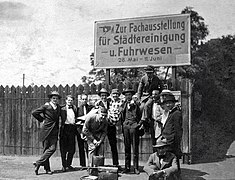Gert Heinrich Wollheim's Human Design Chart
3/5 Emotional Manifesting Generator**Gert Heinrich Wollheim** (November 9, 1894 – April 22, 1974) was a prominent German expressionist painter renowned for his profound emotional depth and connection to the human experience. As a Manifesting Generator in Human Design, Wollheim was characterized by his ability to respond to the world around him with emotional clarity, which deeply influenced his artistic creations. His Inner Authority guided him to produce art that resonated with viewers on a visceral level, allowing him to channel his experiences and emotions into powerful visual narratives.
Wollheim’s most renowned work, *Der Verwundete* (“The Wounded Man,” 1919), is a haunting depiction of a half-naked soldier in agony, reflecting the traumas of World War I. This powerful image has transcended time, even appearing as one of ‘Dr. Lecter’s drawings’ in the iconic 1991 film *Silence of the Lambs*. Born in Dresden, Germany, his 3/5 Profile allowed him to experiment and learn from both successes and failures, ultimately shaping his unique artistic voice. The Right Angle Cross of Rulership (47/22 | 45/26) in his Incarnation Cross signifies his role in influencing and guiding others through his creative expressions.
Wollheim studied at the College of Fine Arts in Weimar from 1911 to 1913, where he was mentored by notable instructors such as Albin Egger-Lienz and Gottlieb Forster. His military service during World War I (1914–1917) resulted in an abdominal wound that would later inform his artistic perspective. After the war, he established an artists’ colony in Remels, East Frisia, alongside fellow artists like Otto Pankok and Ulfert Lüken. In 1919, Wollheim and Pankok became founding members of the “Young Rhineland” group in Düsseldorf, which included influential figures such as Max Ernst and Otto Dix.
His work, known for its theatrical and grotesque elements, evolved into a more objective representation by the mid-1920s. His art was featured in the art competitions at the 1928 and 1932 Summer Olympics, showcasing his growing prominence in the art world. Following the rise of the Nazi regime in 1933, Wollheim’s works were condemned as “degenerate art,” leading to their destruction. He fled to France, where he became involved in the Resistance and co-founded the Union des Artistes Allemandes Libres, an organization for exiled German artists. His life during this tumultuous period was marked by resilience, as he escaped labor camps and hid in the Pyrénées with the help of local allies.
After the war, Wollheim returned to France before relocating to New York in 1947, where he became an American citizen. His legacy as a Manifesting Generator is reflected in his ability to adapt and respond to the challenges he faced throughout his life, ultimately leaving an indelible mark on the art world. His channels, including 16-48, 26-44, 46-29, and 35-36, further illustrate his dynamic creative energy and emotional depth.
Gert Heinrich Wollheim passed away in New York on April 22, 1974, at the age of 79, remembered for his profound contributions to expressionism and the emotional resonance of his artwork. His Human Design attributes continue to inspire artists and art enthusiasts alike, emphasizing the importance of emotional clarity and responsiveness in the creative process.
Discover More Famous People
Browse and analyze over 55,000 public figures and celebrities.
Ra Uru Hu
5/1 Manifestor
Martha Stewart
4/6 Manifestor
David Lynch
4/6 Generator
Barack Obama
6/2 Projector
Steve Jobs
6/3 Generator
Vladimir Putin
5/1 Manifestor
Kim Kardashian
3/5 Generator
Michael Jackson
1/3 Projector
Marilyn Monroe
6/2 Projector
Ariana Grande
2/4 Projector
Oprah Winfrey
2/4 Generator
Johnny Depp
2/4 ManifestorWhat is HumanDesign.ai and how does it work?
Curious what makes Gert Heinrich Wollheim tick? HumanDesign.ai instantly maps their exact birth data into a fully interactive clickable bodygraph chart, letting you hover or tap every center, channel, and gate for plain-language explanations. Bella, the platform’s built-in AI guide, adds context in real time, translating complex mechanics into everyday insights so you can see how Gert Heinrich Wollheim’s strengths, challenges, and life themes play out on-screen.
The same tools are waiting for you. Generate your own Human Design Chart in seconds, open a library of 2000+ suggested questions, and chat with Bella as often as you like to decode your design, daily transits, and even relationship dynamics.
Want to compare energies? Save unlimited charts for friends, family, or clients, then ask Bella to reveal compatibilities, composite patterns, or coaching tips, all in one conversation thread.
Start free with core features, or unlock our Personal and Pro plans for deeper dives: unlimited Q&A, celebrity chart search spanning 55,000+ public figures, white-label PDF reports, branded content generation, and a professional profile with built-in booking for practitioners. Whether you’re exploring your own potential or guiding others, HumanDesign.ai delivers an ever-expanding toolbox of AI-powered insights—no spreadsheets, no jargon, just clarity at your fingertips.
Ready to see yours? Signup for FREE today!

